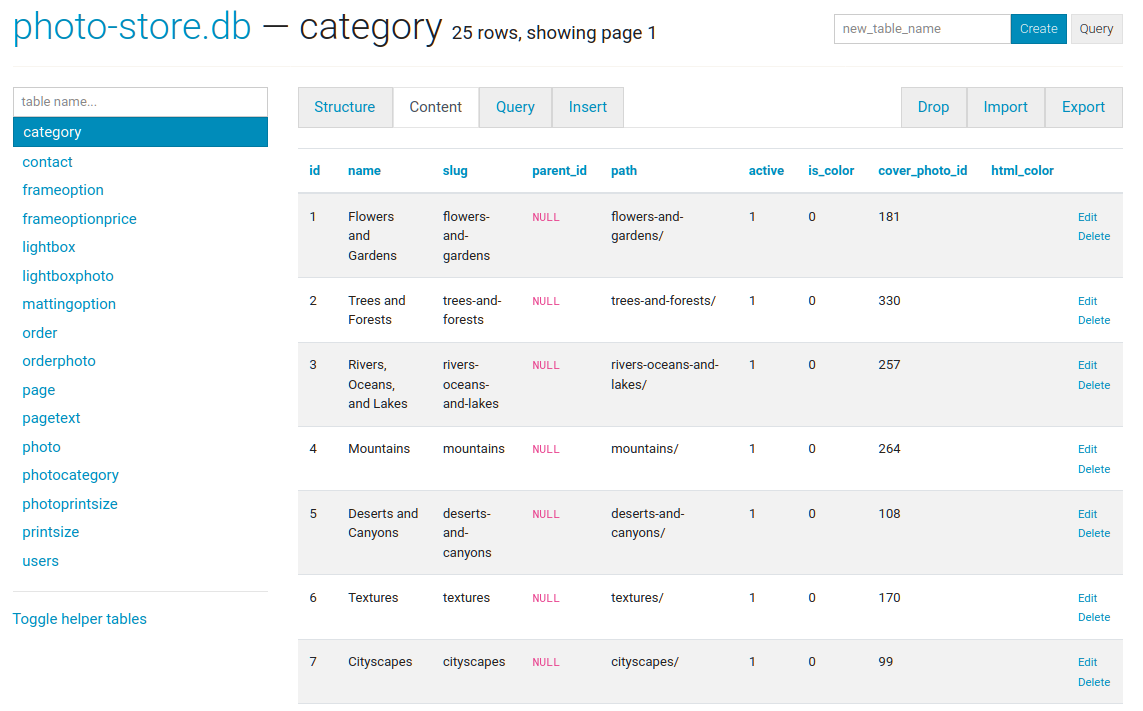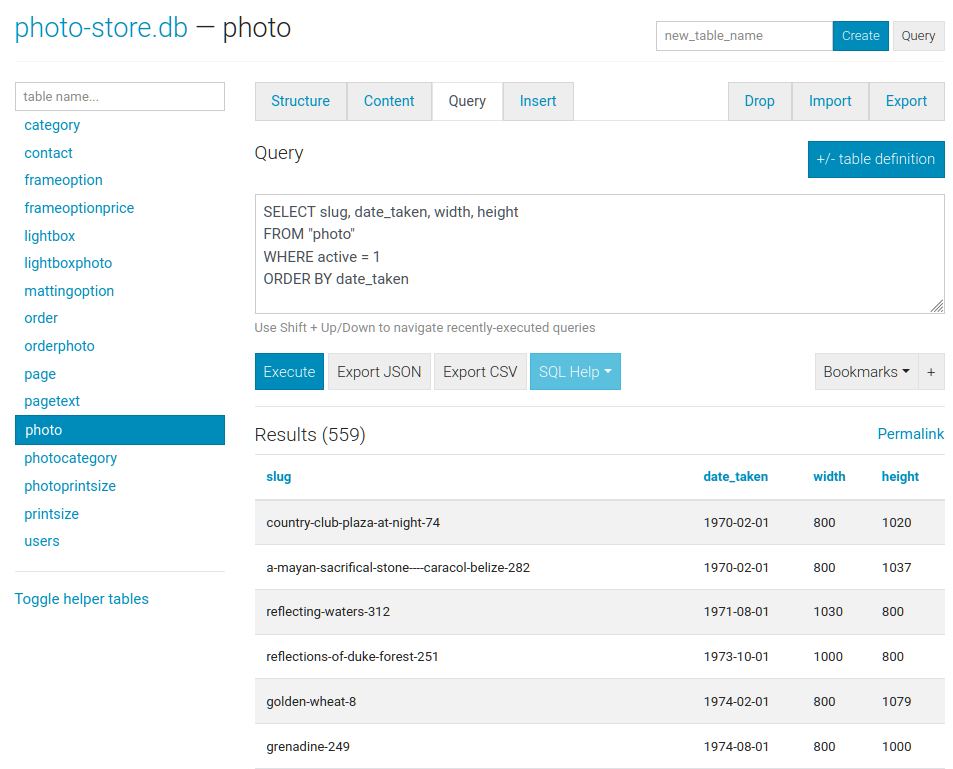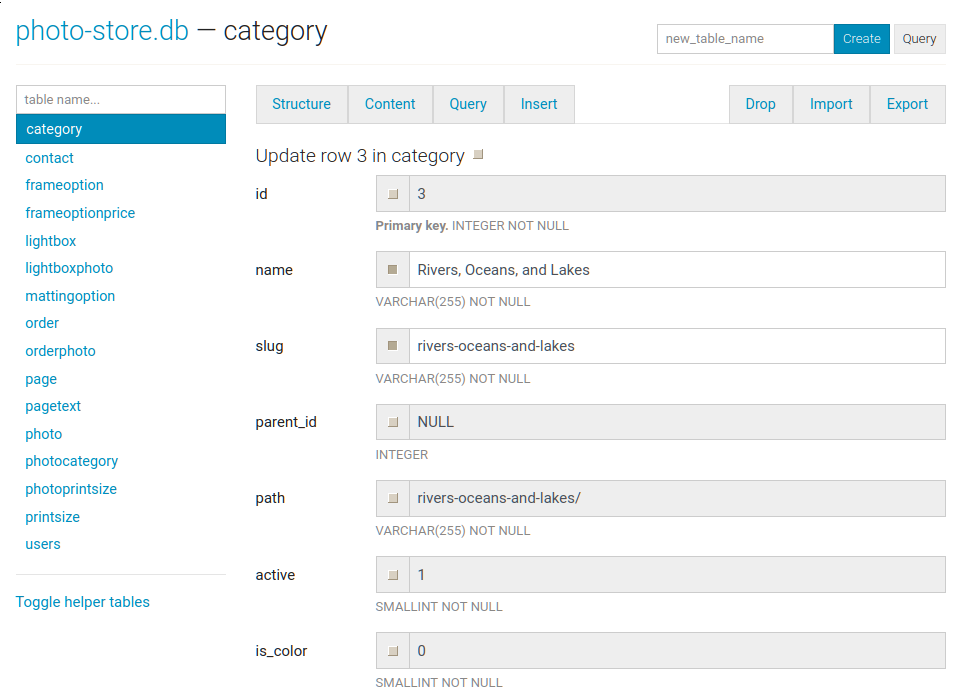sqlite-web is a web-based SQLite database browser written in Python.
Project dependencies:
$ pip install sqlite-web$ sqlite_web /path/to/database.db- Works with your existing SQLite databases, or can be used to create new databases.
- Add or drop:
- Tables
- Columns (with support for older versions of Sqlite)
- Indexes
- Export data as JSON or CSV.
- Import JSON or CSV files.
- Browse table data.
- Insert, Update or Delete rows.
The index page shows some basic information about the database, including the number of tables and indexes, as well as its size on disk:
The structure tab displays information about the structure of the table, including columns, indexes, triggers, and foreign keys (if any exist). From this page you can also create, rename or drop columns and indexes.
Columns are easy to add, drop or rename:
The content tab displays all the table data. Links in the table header can be used to sort the data:
The query tab allows you to execute arbitrary SQL queries on a table. The query results are displayed in a table and can be exported to either JSON or CSV:
The import tab supports importing CSV and JSON files into a table. There is an option to automatically create columns for any unrecognized keys in the import file:
The export tab supports exporting all, or a subset, of columns:
Basic INSERT, UPDATE and DELETE queries are supported:
The syntax for invoking sqlite-web is:
$ sqlite_web [options] /path/to/database-file.dbThe following options are available:
-p,--port: default is 8080-H,--host: default is 127.0.0.1-d,--debug: default is false-l,--log-file: filename for application logs.-x,--no-browser: do not open a web-browser when sqlite-web starts.-P,--password: prompt for password to access sqlite-web. Alternatively, the password can be stored in the "SQLITE_WEB_PASSWORD" environment variable, in which case the application will not prompt for a password, but will use the value from the environment.-r,--read-only: open database in read-only mode.-R,--rows-per-page: set pagination on content page, default 50 rows.-e,--extension: path or name of loadable extension(s). To load multiple extensions, specify-e [path]for each extension.-u,--url-prefix: URL prefix for application, e.g. "/sqlite-web".-c,--certand-k,--key- specify SSL cert and private key.-a,--ad-hoc- run using an ad-hoc SSL context.
A Dockerfile is provided with sqlite-web. To use:
$ cd docker/ # Change dirs to the dir containing Dockerfile
$ docker build -t coleifer/sqlite-web .
$ docker run -it --rm \
-p 8080:8080 \
-v /path/to/your-data:/data \
-e SQLITE_DATABASE=db_filename.db \
coleifer/sqlite-web









